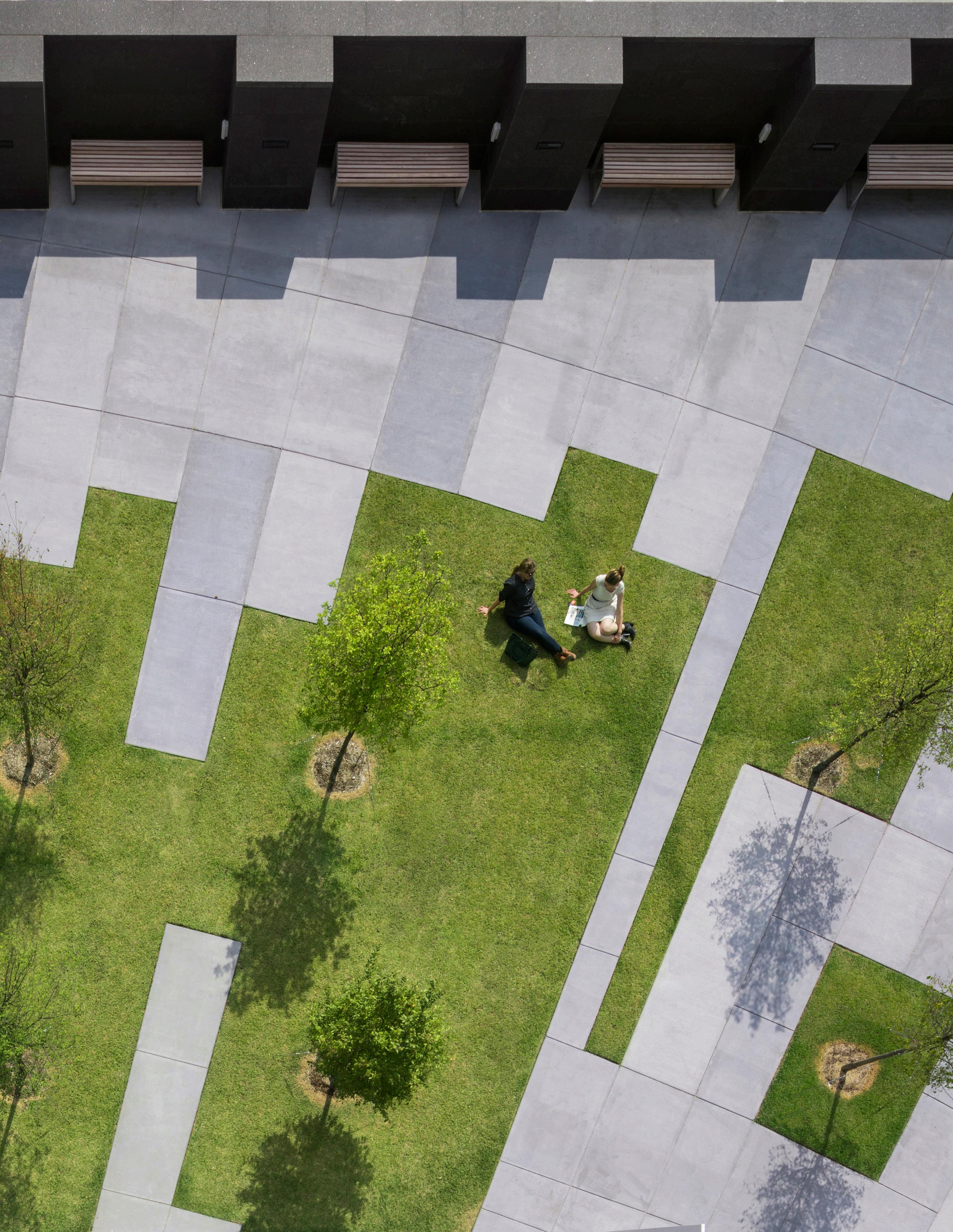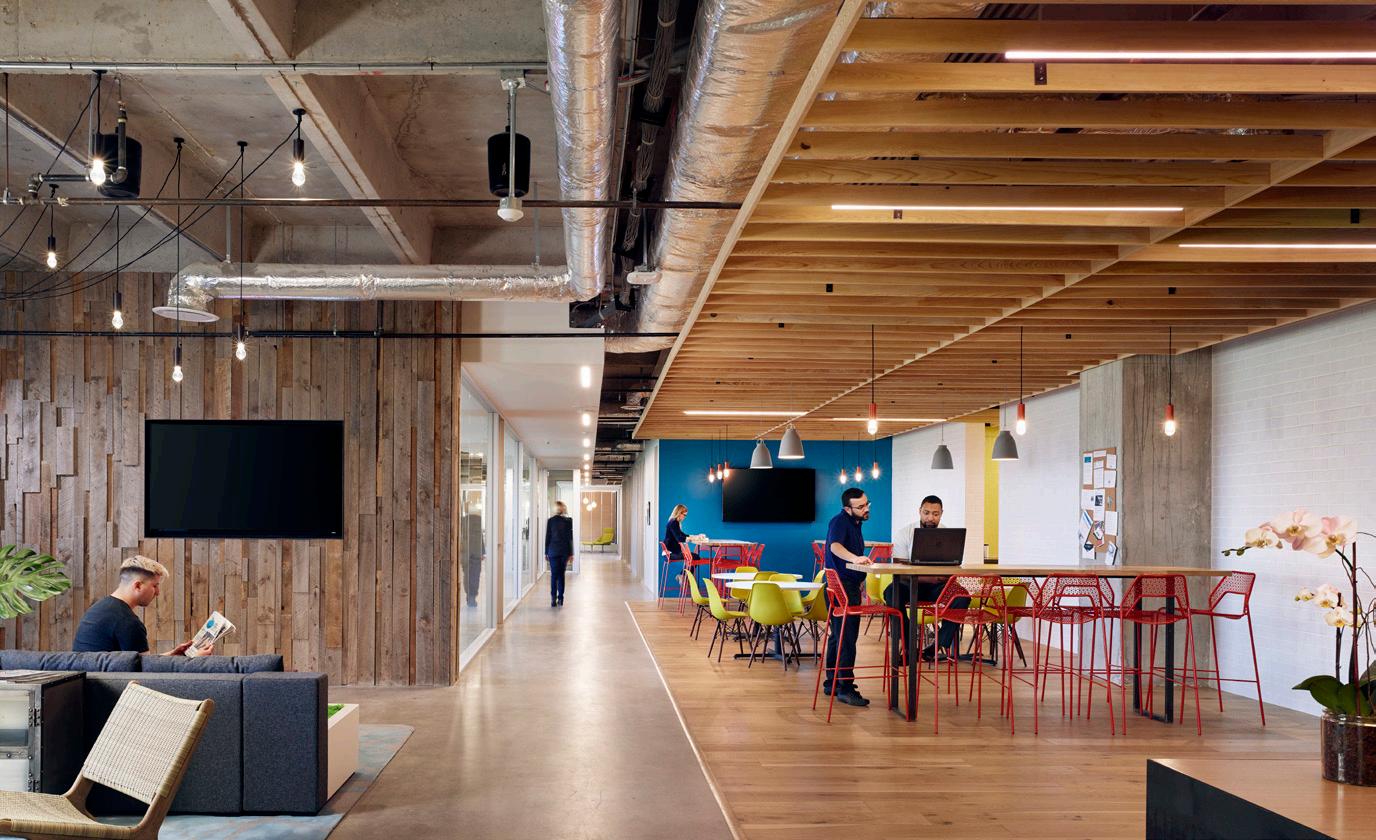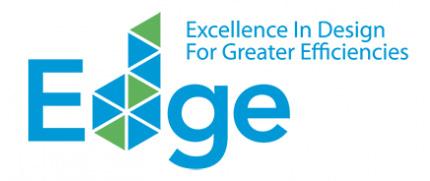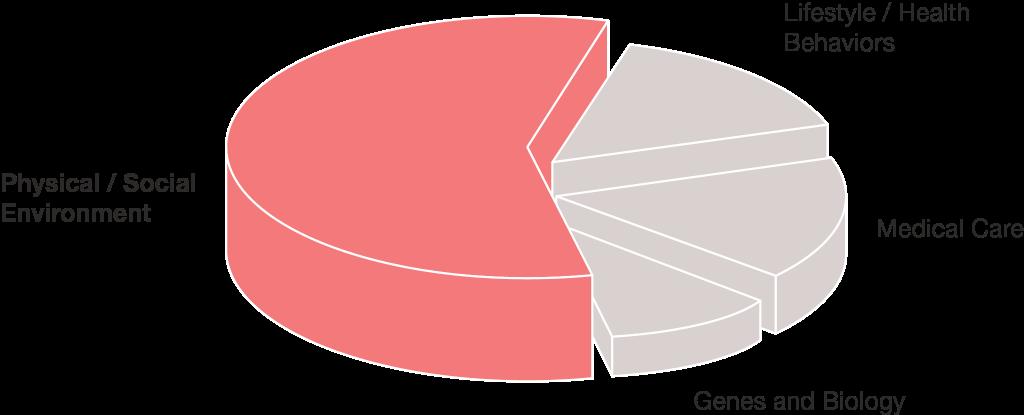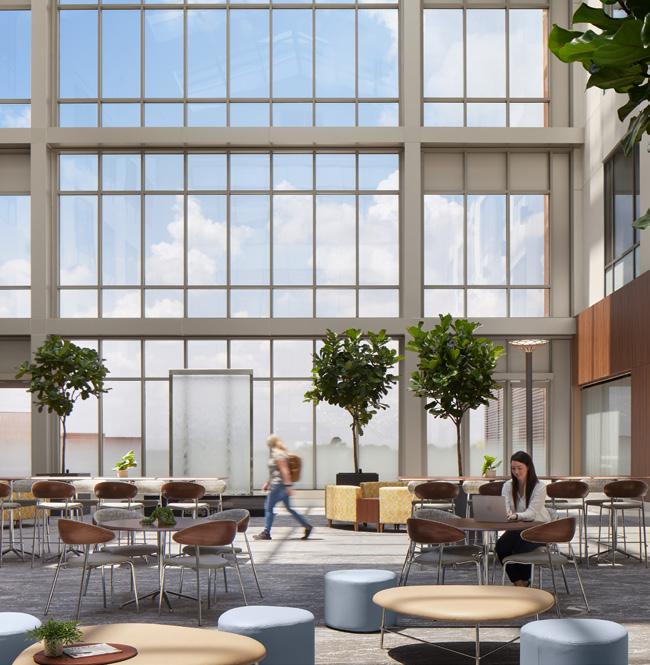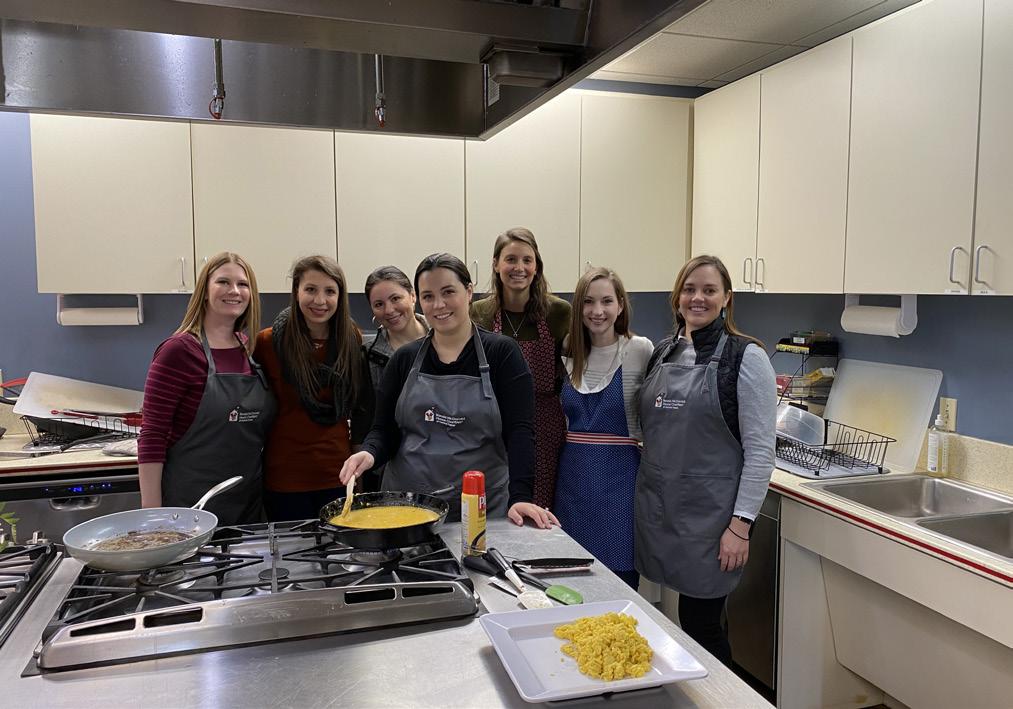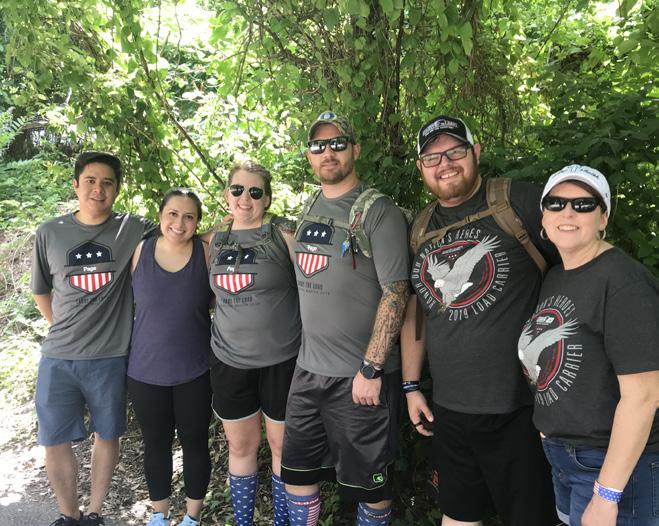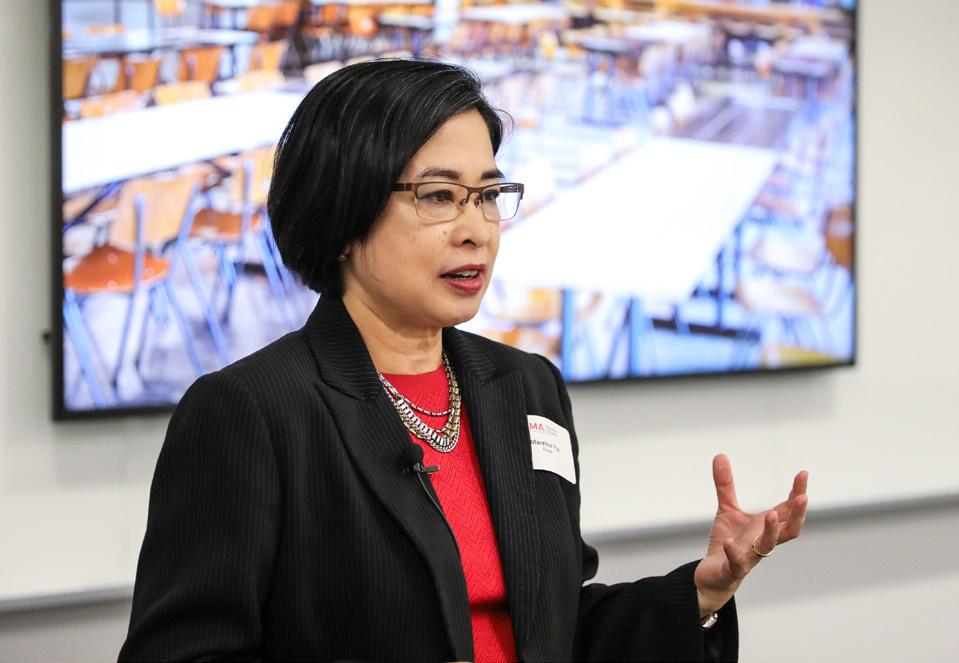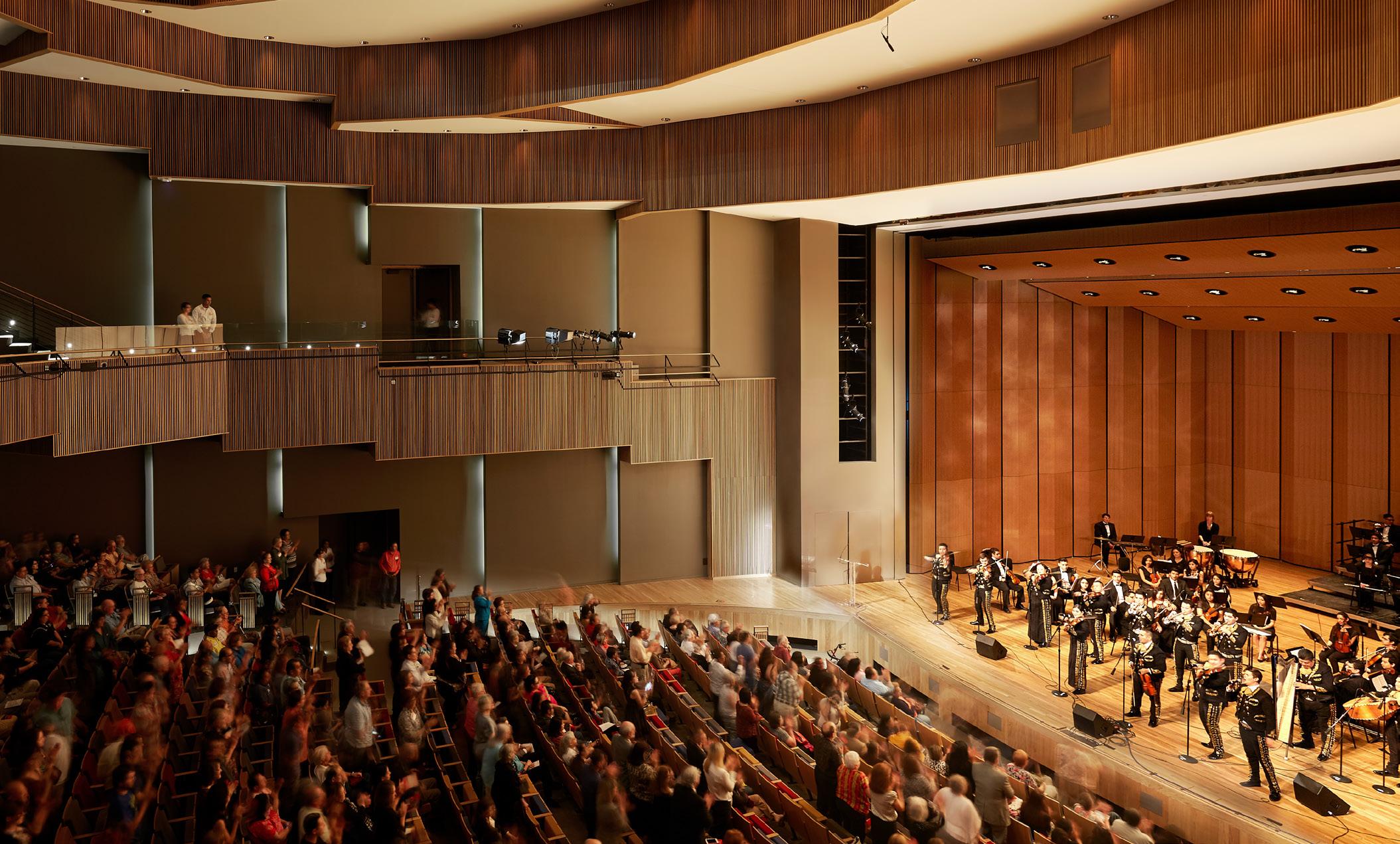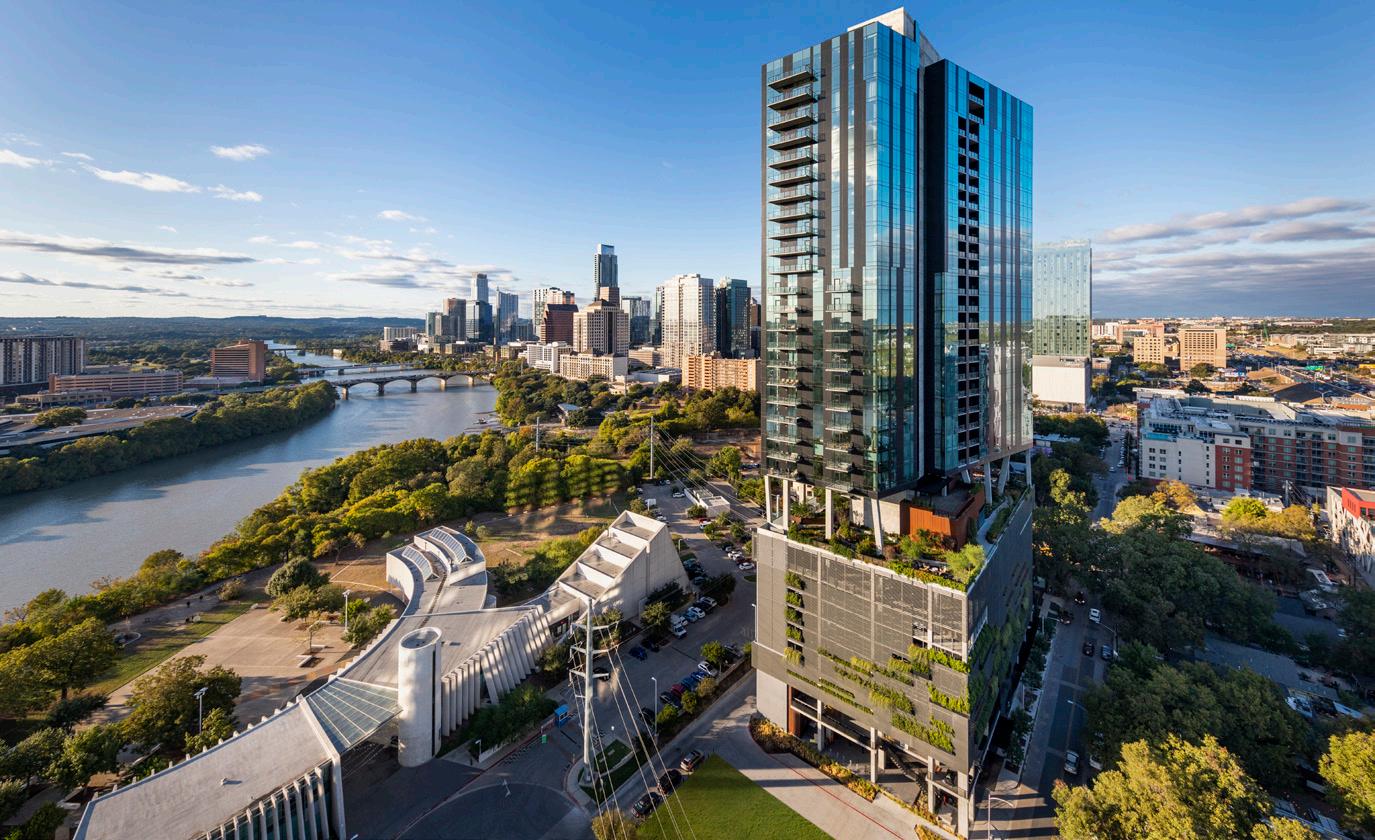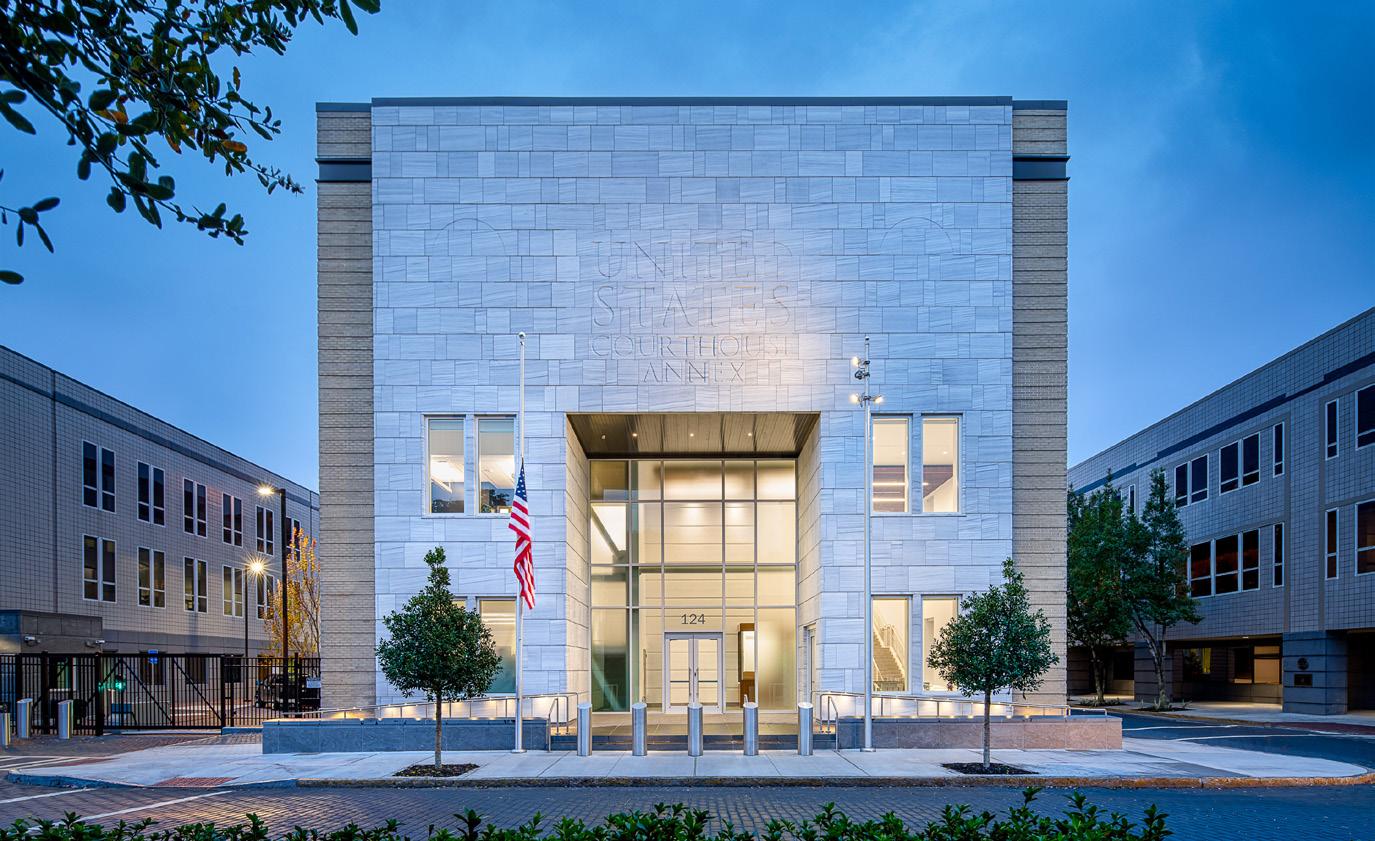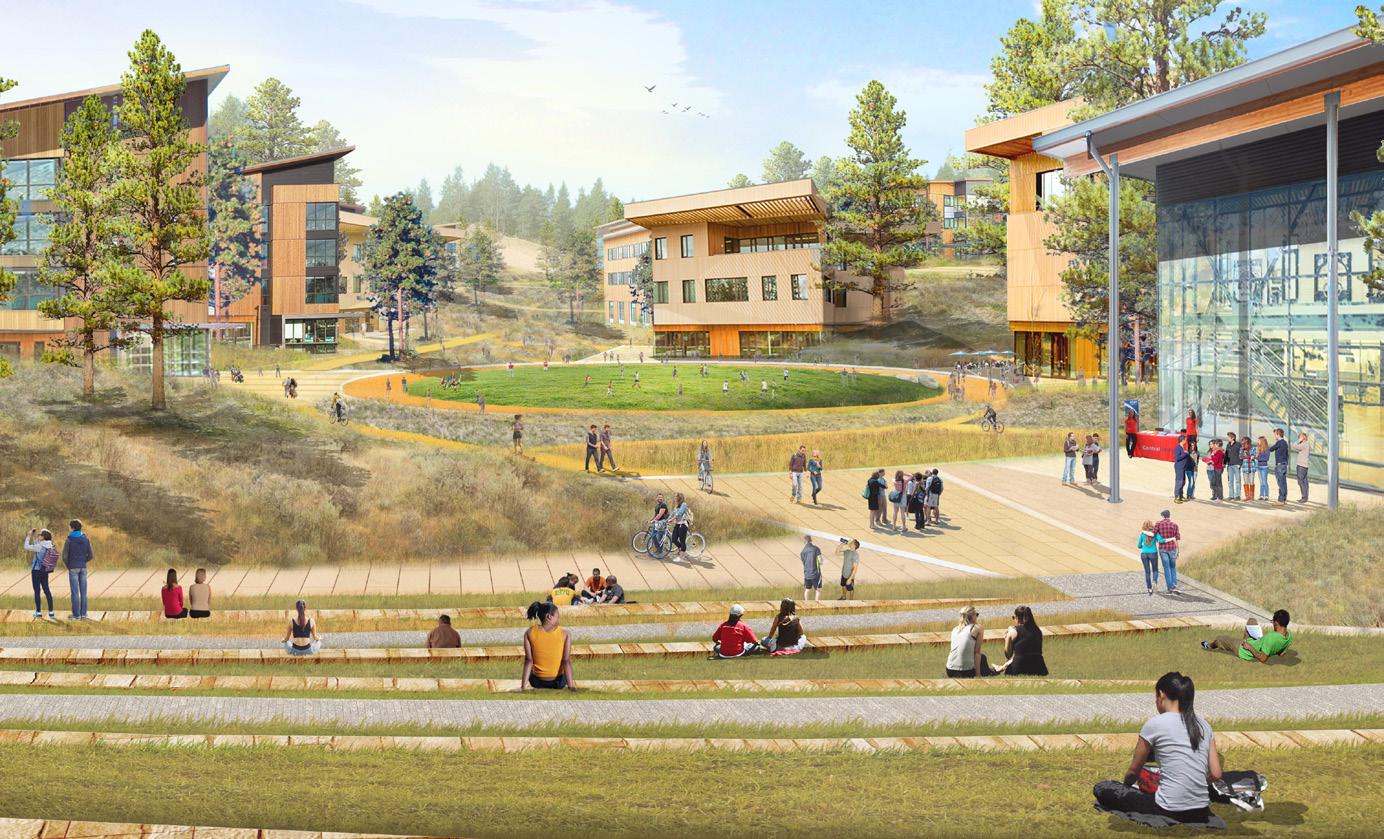We believe in a future where buildings create more energy than they use, make people healthier and are positive contributors to their communities.
As designers, architects, engineers and planners, we have a tremendous impact on the world around us. We take this responsibility seriously and believe that every design should make lives better.
Collin College Wylie Campus
Our focus has shifted beyond doing more with less toward restoring and improving the sites, neighborhoods and cities where we work. This vision requires strategy, and our intentions require rigor.
Buffalo Bayou Park Cistern
We have seen firsthand the increasing need for our communities to prepare for the unknowns of tomorrow. We plan for climate extremes and design for flexible futures by creating adaptable projects that advance resilience.
Quarry
As a 120-plus year-old firm and one of the first large firms to sign the AIA 2030 Commitment, we are invested in leading our industry through the current energy and technological transition toward a regenerative tomorrow.
As agents for positive change, we are driven by ideals we hold dear. In the delivery of our services, we are guided by three core values: creativity, collaboration and commitment.
The past years have been unprecedented, bringing uncertainty, loss and disruption at a global scale not seen in our lifetimes. They have also shown us the power of collective action around a common cause and the importance of caring for the vulnerable among us, reminding us all what matters most.
As society evolves to a new normal, we at Page are amplifying our commitment to design higher performing, healthier and more resilient communities that make lives better for all. This is not only a best business practice but also part of our responsibility as we create places and spaces for this generation and the ones to come. This vision requires strategy, and our intentions require rigor. We aim to continually advance how we measure what matters: reducing our environmental impact, improving our communities and leading with integrated design.
This report is an overview of our ongoing commitments, updates to our strategy and a record that tracks our progress. We share it to celebrate the work we have achieved, challenge ourselves to continue to reach forward in these goals, and invite our partners to join us in the pursuit of design that makes lives better.
Sincerely,
Lead With Integrated Design Pursuing Exceptional Designing for Impact
In 2009, we signed the AIA 2030 Commitment to pursue carbon neutrality in our work by 2030. We have established leadership in sustainability, actively improved our operations and reported our annual progress.
2020 Target
2015 Target
2010 Target
80% AIA 2030 committment taget
53.6%
Page 2020 average energy use (EUI) % reduction
51%
AIA 2020 average
Building production and operations emit 33 percent of global energy-related greenhouse gas emissions, making them the single biggest carbon emitter by sector. Emissions are expected to double by 2050, and while ASHRAE standards, aggressive code changes and clean-energy grid sourcing are all in motion, they need to be ramped up to address the carbon emissions associated with the operations of our buildings.
In 2009, we became an early adopter of the AIA 2030 Commitment. As signatories, we pledged to reduce the use of energy and de-carbonize energy sources in all of our projects with a goal of designing all carbon neutral projects by the year 2030.
Progress towards our goal is determined by the Predicted Energy Use Intensity (pEUI, kBTU/sf) of each project. It’s important to note our baseline is determined by the 2003 Commercial Building Energy Consumption (CBEC) report that listed average pEUI for 47 building types.
65.5M
reported square feet of projects to AIA 2030 since we signed the commitment.
100%
reporting all of our eligible projects.
We are maintaining our commitment and improving our performance by:
§ Continuing to report 100 percent of our eligible buildings.
§ Setting 2030 EUI targets for every project.
§ Targeting at least five percent better than code on all projects.
§ Targeting 20 percent better ratings on all projects seeking certification.
§ Using energy modeling as a design tool to advance energy reduction in our projects.
§ Advocating for on-site renewable and solar ready buildings.
In our hot climates, we use solar insolation analysis to evaluate massing and shading to reduce heat gain and optimize cooling peak load, equipment sizing and overall energy use.
University of Houston Sugar Land College of Technology Building
Measuring carbon emissions associated with our material selection is critical to reducing our environmental impact.
Buildings, their construction materials and the energy they consume account for approximately 39 percent of global carbon emissions. Reducing the embodied carbon in our building materials is fundamental to our reduction strategy. Critical core and shell building materials such as cement, steel, aluminum and glass are major C02 contributors. Combined, they equate to 11 percent of all carbon emissions.
According to Intergovernmental Panel on Climate Change’s (IPCC) models, the next 10 years are crucial for us to curb climate change. We know that buildings have an average estimated life of 60 years and that reducing embodied carbon in building materials is just as important, if not more so, than reducing it the building’s operation. So how do we reduce carbon emissions in the production of building materials?
Core Principles for Reducing Our Embodied Carbon
Wherever possible, reuse, renovate and reposition existing buildings. Extending the life of existing buildings can save anywhere from 50-75 percent of embodied carbon emissions compared to the construction of new buildings, especially if foundations and structures are preserved.
Focus on carbon reduction for structure and envelope materials. “Heavier” building materials represent approximately 80 percent of the entire carbon footprint of a building, and thus provide the highest opportunity for savings. Our structural engineers and building sciences team are attuned to evaluating structural system options based on embodied carbon
To advance our efforts, we commit to:
§ Conduct a Life Cycle Assessment for environmental impact in schematic design on all projects seeking green building certification and projects larger than 100,000 sf by 2023 to set a benchmark for our firm.
§ Target a 20 percent reduction in environmental impact by 2025.
§ Educate all staff about embodied carbon and decisions they can make every day to reduced embodied carbon in our projects.
§ Ask our structural engineering partners to sign the SE 2050 Commitment.
§ Adopt maximum Global Warming Potential benchmarks for standard construction materials by 2025.
§ Adopt maximum benchmarks for every project’s embodied carbon content.
§ Estimate the emissions payback period for embodied emissions in each project by 2030.
impact. We strive to work with contractors who are committed to means and methods to reuse. Architects need to maximize structural efficiencies and specify highrecycled content in cement and steel.
Design to minimize waste. Interiors of buildings are updated every 10 years on average which, over time, represents an enormous embodied carbon impact. Selecting products made with highrecycled content is a good place for interior designers to start minimizing this impact. Additionally, selecting products with take-back programs reduces embodied energy, supports manufacturers taking responsibility for production processes and extends product useful life, which creates a more circular economy.
Track the embodied carbon in the materials of our buildings. Nutrition labels transformed the way we looked at our food, and likewise, building material transparency helps us make more informed decisions. Architects must ask for Environmental Product Declarations (EPDs) from manufacturers, use free tools like EC3 for early material analysis or Tally to conduct Revit-based carbon analysis, use the AIA’s Large Firm Round Table’s Countdown on Carbon guide and sign up for the Embodied Carbon Network to stay up to date with others trying to tackle these issues.
OPERATIONALENERGYUSE
Austin, Texas
200 West
6th Street, Indeed Tower
Working with developer Trammell Crow Company, we designed one of the largest office buildings in Austin. In addition to significant collection and reuse of water on the site, we preserved an existing early 20th-century post office on the site, adapting its interior as a workplace and innovation center. The rehabilitation of the historic building as well as improvements in concrete mix used for the towers resulted in a 20 percent reduction in embodied carbon over conventional practices as well as a 12-25 percent reduction in the other five environmental impact categories that LEEDv4 measures.
BUILDING LIFESPAN (60 yrs)
Reduce Our Environmental Impact | Waste and Water Reduction
We aim to reduce water use by a minimum of 20 percent beyond standard practices on every project.
As existing water resources become increasingly scarce and consumption rises exponentially, we must emphasize water use reduction in the design of all buildings. From residential and hospitality buildings to corporate and commerical structures, water use must be reduced and reuse implemented as much as possible, but it is especially important to consider when desiging industrial facilities.
The Page Industrial market sector measures and quantifies water conservation design. This service exponentially impacts our ability to reduce potable water demands in our building portfolio.
14M
total gallons of water saved annually.
6.5M
gallons of water saved annually through reclamation.
Lost Lake Pavilion at Buffalo Bayou Park
We are committed to reducing waste both in our facilities and throughout the design and construction process.
While it’s important to reduce our organization’s operational waste, our primary impact on waste streams is in the buildings we design.
We emphasize tracking waste reduction on our projects’ construction.
Minimizing waste during construction from materials is a key component of reducing embodied carbon. Any waste created is recycled as much as possible.
of all our certified green building projects achieve at least
TechSpace Austin. Extending the life of existing buildings and minimizing new material use is one of the biggest waste reductions we can make in our work.
LEED AP and LEED Green Associates
Projects : Certified and In Progress (as of January 2022) Reduce
Twelve WELL APs, two Fitwel and one SITES AP
Accredited Professionals (as of January 2022) 120 27
LEED certified projects totaling 23.2M square feet countries with LEED certified or in progress projects
Certified Commissioning Professionals
51% 76
8M
certified or in-progress project square feet by Austin Energy Green Building
4 5 90
Green Globes certifications
Net Zero ready projects Energy Star projects of our LEED certified projects are Gold or Platinum active certification projects SITES certifications
3
LEADING BY EXAMPLE
Page Office Certifications
Austin
Austin Green Business Leadership Platinum
Austin 360
Energy Star*
Dallas
LEED Silver Certified
Denver
BOMA 360 Certified*
Energy Star*
GREBS 5 Star Rating*
LEED EBOM Gold Certified*
UL Indoor Air Verified*
WELL Health-Safety Rated*
Houston Energy Star*
LEED EBOM Gold Certified*
WELL Health Safety Rated*
Phoenix Energy Star*
Washington, DC
Energy Star*
WELL Platinum Certification /in progress
* indicates certification for the base building where the office is located
As designers and planners of the built environment, we have a tremendous impact on the world around us and take this responsibility seriously. We believe that every design should make lives better. Our focus has shifted beyond doing more with less toward restoring and improving the sites, neighborhoods and cities where we work. This intention requires rigor, and it is our strategy for implementing this vision that sets us apart.
We consistently deliver LEED certifications that surpass our client’s expectations. We are proud to have designed over 23.2M sf of LEED Certified projects in 27 countries, 50 percent of which are LEED Platinum or Gold Certified. We also currently have over 76 LEED or other sustainability certification projects in progress.
We are leaders in Austin Energy Green Building (AEGB), one of the predecessors to LEED. Our portfolio has more AEGBcertified square footage in the Central Texas region than any other design firm.
Page Denver Office
As signatories of the AIA Materials Pledge, we are redoubling our commitment to design for wellbeing by advocating for human health, regenerative environments, comfort and social equity.
Some of the biggest determinants of health are physical and social environments. Addressing the challenges in both realms is core to achieving better health equity. This creates a profound responsibility for those of us entrusted with creating the built environment to advance the wellbeing of all who live, work and play in the spaces we design.
We are doubling down on our commitment to design for wellbeing by advocating for human health, regenerative environments, comfort and social equity.
We strive to ensure spaces are made physically healthier by focusing on improving air quality and avoiding the use of materials that can cause illness. This is the foundation to achieving health
equity. We push a step further by creating regenerative and restorative spaces that provide the best support for people.
At the pinnacle of wellbeing design are spaces that encourage community connection and allow people to advance their own personal growth, facilitating the best in everyone.
Over the past decade, we have seen an increasing need to build resilient communities. At this time, our planet is undergoing unprecedented changes. We are charting new paths toward a variety of unique operational models that support healthier environments at achievable costs.
Determinants of Health
Centers for Disease control and Protection. Frequently Asked Questions. 2014. Available online at: https://www.cdc.gov/nchhstp/socialdeterminants/faq.html
Designers have traditionally considered resiliency as it relates to environmental catastrophes such as floods, hurricanes and earthquakes. But now, we are expanding that way of thinking to examine how the built environment can improve mental health, emotional and physical wellbeing, empathy for others and connections to one’s community in a postpandemic world.
We are committed to helping clients define practical, actionable and unique solutions that are specific to each of our clients’ cultures, businesses, staff and future goals.
Healing Garden at the Houston Methodist Willowbrook Hospital
Materials Matter
In April 2016, we launched Materials Matter. It is an initiative promoting the specification of healthier materials with fewer toxic chemicals, lowered emissions and longer lifespans through product transparency. Our journey to less harmful materials and products has opened the doors to advancing our impact with leading manufacturers, local fabricators, contractors and clients alike.
We have since launched improved tools for all our project teams to better establish goals for material selection focusing on improving material heath, environmental health and social responsibility. Additional guides help our teams vet materials, document the selection process and ultimately support construction.
With our ever-growing materials database, we continue to promote market transformation toward a more resilient and sustainable future with all of our projects. Every success serves as a step on the ladder to the next one.
Materials Library in Page Houston
The University of Texas Investment Management Company Office Relocation
We are signatories of the 1+ Program and donate 1 percent of our working hours to pro-bono services.
Our promise is design that makes lives better. Whose lives? What do we mean by “better”?
At Page, we believe every design solution should make lives better. Sustainable design has evolved from more than just minimizing negative impacts on the environment in order to do no harm. It now means maximizing positive impacts on the communities and people we serve. We continuously ask ourselves how we can ensure that financial and material resources going into every project result in positive outcomes for the people in our communities and the environments that sustain them. We question how we can ensure that positive outcomes are shared equitably. And, we work collaboratively with those impacted by each project to define what ‘better’ means to them.
OnePlus, Pro-Bono and
Low-Bono
Projects
Our firm is a committed partner of the 1+ Program, which challenges designers to dedicate one percent or more of their working hours to pro-bono service.
We provide non-profit community partners with a range of pro-bono and low-bono (significantly reduced fee) professional services including programming, master planning, architecture, engineering, interiors, branding and graphics and more.
We often help clients leverage the impact of our work by providing consulting and design services that amplify their fundraising and outreach efforts. We also help them navigate change and growth through collaborative design thinking and problem solving.
Our non-profit and civic/community clients work every day to make lives better, particularly for those who have been traditionally underserved by planning and development efforts. We are proud to add value to each community partner’s mission and goals by providing affordable professional services and thoughtful design solutions that have a clear positive impact while being sensitive to each organization’s needs and budget.
Traditional Projects
What about the other 99 percent? Our work consists largely of complex projects that benefit from our integrated disciplines and that make a significant impact on the communities they serve. Our clients include municipalities, academic institutions, healthcare providers, major employers and housing communities that shape the world around us.
We believe that buildings are more important for what they do—for the positive impact they make on individual lives—than for what they are, in terms of image. We provide a solution-driven focus on projects that results in positively impactful buildings and places. To that end, every Page project has a community focus and is an opportunity to use thoughtful, resourceful design to make lives better.
Non-Profit Clients
Austin Habitat for Humanity Avenue
BakerRipley
Equest
Good Neighbor Healthcare
Greater Texas Foundation
Harris County Youth Services Center
Healthcare for the Homeless Houston
Holdsworth Foundation
KUT/KUTX Radio Stations
Magnolia Montessori for All MLK Health Clinic
Mobile Loaves & Fishes / Community First Village
Montrose Health Clinic
My Healing Place
National Domestic Violence Hotline
Pease Park Conservancy
People’s Community Clinic
Renaissance Riverfront Lofts
Ronald McDonald House
Charities of Central Texas
The SAFE Alliance
San Antonio Botanical Gardens
San Antonio Museum of Art
Target Hunger
Travis Audubon Society
Waterloo Greenway Conservancy
Umlauf Sculpture Garden
YMCA
Plan to maintain our 1+ commitment and improve our performance:
§ Track hours dedicated to pro- and low-bono projects.
§ Follow a process for determining which community partners, professional services and combination of pro-bono and low-bono fees will allow us to maximize the positive impact of our committed hours.
§ Create resources and training to support all teams in considering the impact of projects on communities throughout the design process.
§ Measure and assess the social impact of our projects. How have we made lives better? Who have we impacted? How did our design specifically contribute? Where can we learn and do better?
§ Highlight positive stories of design that makes lives better.
Multifamily housing project designed for Austin Habitat for Humanity
We are dedicated to advancing cities, spaces and places that make up our communities. Our people invest in and support causes that matter.
Sharing Time and Talent
Our employees share our values, care about our communities and are active in environmental and community causes. They are actively engaged in our local communities through volunteer service and civic engagement, both as individuals and through Page-organized activities and events. Many also support professional organizations and local communities by serving on boards, commissions and committees.
Volunteering / Community Engagement
Our community activities range from design competitions that support local food banks to Hearts and Hammers, Meals on Wheels and much more. Our employees organize fundraising events to raise awareness of the importance of design among community leaders such as our Conversations in the Garden series at the Umlauf Sculpture Garden. This is typically attended by voices of influence from a wide variety of Austin-based industries who discuss the social value of design and innovation in problem solving.
Promoting Equity
Since 2013, the Page Board of Directors has actively tracked the gender and ethnicity of our workforce while emphasizing inclusivity in newly appointed leaders and the talent pipeline.
The Board has also actively encouraged industry engagement through the sponsorship of events held by organizations such as National Association of Minority Architects (NOMA), Latinos in Architecture (LiA), Women in Architecture (WiA) and more. Mattia Flabiano, Senior Pincipal at Page, along with leaders of the AIA Large Firm Round Table, has engaged with Historically Black Colleges and Universities to recruit, teach and mentor minority students pursuing a career in architecture and help bridge the gap of minorities in the industry.
Our employees have volunteered for leadership roles in these organizations. In recent years, they have attracted national industry attention and media coverage for exhibits open to communities at large such as Women in Architecture which highlighted the contributions women have made to the industry and created dialogues about inclusivity.
Page Foundation
The Page Foundation is a 501©(3) charitable organization dedicated to advancing cities, spaces and places that make up our communities. For more than a decade, the Foundation has supported scholarship and research dedicated to architecture, building science and technology, historic preservation,
landscape architecture and urban design. Key initiatives include academic scholarships and fellowships as well as a series of symposia focused on advancing conversations around important topics such as resilience and universal design.
Design Symposia
Most recently, the Page Foundation partnered with 100 Resilient Cities to organize a national multiday conference, AdRESS (Advocating Resilience through Environmental and Social Solutions) –Connecting the Conversations. The event explored elements of social resilience from community support to emotional and physical health, to social equity and inclusivity.
The Foundation is planning the UniversALL Design Symposium, which will explore shared community benefits of designing inclusive and facilitative environments for all users. The program will bring together international experts in designing accessible spaces and provide experiential learning activities with goals of exploring how design can foster access, participation and inclusion for people of all abilities.
hours volunteered by our employees to community services events and projects in 2020.
We are involved with many academic, professional and community organizations. Our engagement with these programs and agencies is fundamental to our mission of improving the communities where we live and work.
Community
Adopt-a-Highway
American Lung Association
Archer’s Challenge
Arts in Public Places
Avenue
Habitat for Humanity
Big Brothers Big Sisters of America
Boys & Girls Club
Brookdale Hospice Care
Buffalo Bayou Partnership
CANstruction
Carry the Load
Casa Marianella
CityLab High School CommmunityFirst! Mobile
Equest
Loaves and Fishes
CoreNet Global Community
Academic
Austin Foundation for Architecture
Cristo Rey Dallas College Prep
Florida A&M University
Hampton University
Highland Park Elementary
Howard University
Morgan State University
Prairie View A&M University
Texas A&M University College of Architecture
Texas A&M Engineering Extension Service
Texas Tech University College of Architecture
Tuskegee University
University of California, Berkeley
University of the District of Columbia
The University of Texas School of Architecture
University of Houston
Reinvestment Challenge
Court Appointed Special Advocate (CASA)
City of Austin Downtown Commission
East Austin Studio Tour
empower Her
Food Banks
Foundation Communities
Girls Empowerment Network
Girls Scouts of America
Greater San Marcos Partnership
Hearts & Hammers
Heritage Neighborhood Association
Kids’ Meals
Living Building Challenge Collaborative
The Junior League
March of Dimes
Meals on Wheels
Emma S. Barrientos Mexican American
Professional
Cultural Center
National Cave Rescue Commission
National Speleological Society
Operation Backpack
River City Youth Foundation
Ronald McDonald House Charities
Save Our Springs
Susan G. Komen Breast
Cancer Foundation
Texas Appleseed
Texas Task Force Search and Rescue
The Blackshear Schoolyard Project
The Trail Foundation
Thundering Paws Animal Sanctuary
Waller Creek CreekshowWe Are Girls
World Central Kitchen
Young Women in Leadership Symposium
Accessibility Professionals Association
American Council on Education
American Institute of Architects (AIA)
AIA Latinos in Architecture
AIA Women in Architecture
American Planning Association
American Society of Heating, Refrigerating and Air-Conditioning Engineers
American Society of Indian Engineers and Architects
Construction Specification Institute
The Center for Health Design
International Interior Design Association
Latin American Interior Designers, Engineers, and Architects
National Organization of Minority Architects
National Society of Black Engineers
National Society of Professional Engineers
University of Houston College of Architecture and Design
Voorhees College
Society of American Military Engineers
Society for College and University Planning
Society for Experiential Graphic Design Texas Architectural Foundation
Society for Marketing Professional Services
Urban Land Institute
U.S. Green Building Council
WELL Institute
We are committed to expanding our industry’s pipeline to create a more diverse workforce that brings creative ideas, perspectives and processes improving design solutions.
Recruiting
We support safe, inviting and inclusive spaces for all our employees. Our greatest designs come from welcoming everyone’s unique perspective, resulting in collaborative teams. From the long-tenured to early career, we all have a voice here. Our culture is something we work at and improve every day with the help of our invaluable, talented staff.
Our Page One initiative supports equity, diversity and inclusion which puts our people and our clients at the center of everything we do.
Our goal is to cast a wide net to find the best talent who will further broaden our perspective as our workforce becomes ever more diverse. As a member of the AIA Large Firm Round Table, Page is committed to doubling the number of licensed black architects by 2030 and working together with our peer firms to bridge the gap of minorities in the industry.
As a firm, we have fostered relationships with multiple HBCU organizations over the years with the objective of raising interest in design and engineering careers and recruiting new thought leaders of tomorrow. The AEC Industry has much work to do, and Page is committed to creating a firm that is reflective of both the clients we serve and the communities where we live, work and play.
“We understand that as a firm we have an obligation to be an integral part of helping to heal a legacy of racial injustice and bias through engagement within our local and regional communities and our professions of architecture, engineering and consulting services, and most importantly through engagement with and a continued commitment to our people.”
Mattia Flabiano III, Senior Principal
Mentoring
We are dedicated to closing the gap in gender diversity with the help of our employees. We believe this begins with educating, encouraging and mentoring younger generations. We encourage our employees to serve as mentors, professors, leaders and speakers in organizations that are dedicated to the growth of young leaders of tomorrow.
With our full support, many of our planners, designers, and architects are active members of National Organization of Minority Architects (NOMA) as well as the AIA programs Latinos in Architecture (LiA) and Women in Architecture (WiA).
Ethnicity
We believe that people-centered organizations lead to a more inclusive culture, resulting in more diversity in leadership. Diversity in our industry is important because it helps our teams better understand the communities for which they are designing. It is also important because it allows our built environments to truly represent the communities they are designed for.
Diversity is more than just race, age and/ or gender. With 10 offices around the world, 28 languages spoken by our employees and project work in 94 countries, we embrace and celebrate regional differences. Purposeful recruiting over the last two years has led to a much more diverse workforce with over 40 percent of the new hires identifying as people of color or non-white.
Gender
We also realize that women and non-binary individuals are underrepresented in the AEC Industry and more specifically in management positions. We have implemented programs to help empower our colleagues to learn how to advance their careers and support each other in the process. Page is proud of the work we have done over the last four years in recruiting a more diverse and inclusive workforce with 41percent of the new hires being female or non-binary.
Generational
Diversity goes beyond visible differences. Generational diversity helps strengthen our thought leadership. While older generations provide knowledge of practices and markets, newer generations bring a fresh perspective and understanding of new technologies.
7%, Asian 6%, Black / African American 4%, Two+ Races / Other 16%, Hispanic / Latino
17%, Boomers, (1946-1965)
22%, Gen X, (1966-1976)
52%, Millenials, (1977-1994)
9%, Gen Z, (1995-2012)
67%, White
Gender, Leadership
Gender, Overall
Page Diversity, as of December 31, 2021
Page Generations
We are committed to engaging, empowering and helping everyone reach their full potential to effect positive business outcomes.
As a firm, we have an obligation to help to heal a legacy of racial injustice and bias through engagement within our local and regional communities, our multidisciplinary professions and through continued commitment to our people. Toward this end, we engaged a third-party team of experts to launch our multi-point Equity, Diversity and Inclusion (EDI) program, led by Dr. J. Goosby Smith, PhD, inaugural vice president for community belonging and chief diversity officer at Pepperdine University. Dr. Smith was previously the assistant provost, diversity, equity and inclusion; director of the Truth, Racial Healing and Transformation Center at The Citadel.
Dr. Smith has national experience helping organizations advance through an introspective review of what they do well and can do better. Under her leadership, our firm is taking the following actions:
Action Learning Groups
Based on employee input in response to a firmwide EDI assessment, our leadership created two Action Learning Teams made up of diverse individuals at all career levels. The Mentoring for Career Development Team evaluates how successful mentoring is at Page, proposes structures and systems to facilitate high quality mentoring and makes sure those programs are equally available to all. We know that when done well, mentoring expands learning and growth opportunities, creates better team players and enables more effective client service.
The Policies, Communications and Organizational Norms Team reviews proposed policies and communications to ensure the operations, programs and messaging reflect our EDI commitment. By analyzing our organizational norms through a EDI lens, we identify the unconscious ways exclusive environments are created that stifle employee participation in life at Page.
Expanding Leadership
In 2017, we partnered with University of Houston to develop a leadership training program that focused on issues of gender diversity and inclusion. It was designed to empower gender-minority leaders to identify their unique professional and personal qualities, actively communicate their goals and bring their whole, best selves to work.
As a successful mentorship platform, this group is a resource educating, supporting and elevating more diverse leadership at Page. With more than 80 participants actively engaged in this program, it is building an inclusive community and bringing our young professionals together with our leaders.
The following year, Pagers in our Austin office worked with a leadership consultant to launch the local AIA Leadership Collective program. Our employees volunteered in an advisory role, developed the branding of the program, including its name, and were among the first class graduates. The program serves all AIA Austin chapter members.
Historically Underutilized / Minority Businesses
We are proud of our long and successful history of integrating consultants into wellorchestrated project delivery teams. Our extensive portfolio includes collaboration with many Historically Underutilized Businesses (HUB) such as Minority Businesses, WomenOwned, Disadvantaged and Veteran-Owned Businesses. This diversity is a priority when we assemble our project teams.
Our clients value inclusive teams and recognize us for exceeding their HUB goals. The University of Texas System honored our firm with its Outstanding HUB Participation Award in 2009, 2012, 2015 and 2018.
Recent, significant projects in which we have met or exceeded HUB goals include
a Veterans Affairs healthcare clinic, a university system headquarters highrise, a major metro District Attorney’s office, and multiple airport projects.
Page often sponsors HUB Events throughout areas in which our offices are located. Additionally, our teams serve as mentors in multiple mentor-protégé relationships sponsored by various local and state entities. Our firm is committed to facilitating the growth and development of small and disadvantaged businesses. Page has also received a Certificate of Excellence for Mentor Protégé Program. 2015 UT System Outstanding HUB Participation Award for the Performing Arts Complex
The University of Texas Rio Grande Valley Academic Performing Arts Complex
We work together as a single firm in a shared pursuit of excellence.
Page One: From Good to Exceptional
In 2013, Page announced to the world that we had made changes reflecting our then-new generation of leadership such as a new organizational structure, the opportunity for every employee to become an owner and a new way of working. This included a “one firm, one voice” approach supported by firmwide processes across all offices to improve project delivery. A few years ago, we elevated this concept with an initiative called Page One.
Page One identified opportunities for offices, practices and other organizational elements to further collaborate across the firm in a shared pursuit of excellence. The tagline “From Good to Exceptional” reflects the continuous mission to evaluate our actions on an ongoing journey with no defined endpoint. As we leverage Page One to improve our communities, reduce our environmental impact and lead with integrated design, we create operational models for others in our industry to follow.
We developed measures to evaluate progress and provide rigor to our intentions. They are based on our defined firm values, conversations with colleagues and research into evolving best practices.
Foundation of Page One:
§ Commitment to transparency and nurturing trust
These measures are organized into six categories, or pillars, that align with industry data gathering and recognition. By intentionally aligning our work with the pillars, we have clear, focused intentions and documentation of our progress:
Firm Strength
We seek people with capabilities and business acumen to give us the knowledge, competitive edge and financial health to create exceptional work on behalf of our clients and communities.
Design
We emphasize generating unique solutions across project types, systems, scales, geographies and client sectors by prioritizing rigor, economy, elegance and ingenuity.
Environmental Responsibility
We consider the impact of buildings on our environment and take responsibility for lessening it through regenerative thinking, processes, and solutions.
Social Responsibility
By intentionally nurturing diversity across origins, backgrounds, skillsets, experiences
§ Assessments of operational conditions
§ Analysis of systems in and out of Page
§ Evaluation of potential opportunities with a broad viewpoint
and more within our teams, we bring a wide range of creative inspiration and expertise to bear on solutions for clients and communities.
We are committed to ensuring our projects make lives better for users, their communities and society.
Research & Tools
We facilitate the dedicated exploration of new ideas and development of proprietary tools to improve our work processes and yield better design solutions.
Efforts to increase our institutional knowledge on key topics or issues involve the systematic collection, organization and creative analyses of information.
Professional Practice Leadership
Page supports professional development and growth within our firm and in our industries through knowledge sharing and service on professional organization committees and boards.
§ Integration of feedback from outreach
§ Conduct research and support innovation
§ Support of a collaborative framework that embeds rigor
Our interdisciplinary team is like no other.
We are architects with a technical understanding of building systems and engineers with an appreciation for thoughtful design solutions. We are creatives who develop financial models and planners who are engaged in facility operations. Our diversity of perspective and backgrounds makes us, our firm and our projects better.
We draw from the diverse expertise of our employees in architecture, sustainability, design, branding & graphics and engineering. We believe our commitment to creativity and collaboration offer our clients a complete project team approach that results in coordinated, welldesigned projects.
We craft each team for each project, intersecting disciplines, market sectors and studios. Our team members are thoughtfully selected based on expertise, skills and experience to create a unique set of design leaders ready to appropriately respond to each project’s needs.
We design for impact by creating high performing, healthy and resilient projects.
Design for Impact
At Page we understand the tremendous impact our work has on the built environment and communities where we work, live and play. We take this responsibility seriously and believe that every design solution should make lives better.
We also recognize that every climate has a different set of challenges, every site has a unique fingerprint and every project has its own story to tell. Our approach to sustainability and impact is grounded in these stories and unique responses to place, not a one-size-fts-all checklist.
We begin with a foundational conversation about organizational objectives and client priorities. These are incorporated with our own firm’s commitments, values and performance strategies, giving us clear guiding principles and shared project performance goals. Our responses to these core questions become key drivers in early design concepts and guide integrative solutions.
Design for Impact Process:
§ Schedule a design charrette early in the project to set goals and targets for each area of impact. Define metrics to measure and guide design strategies.
§ Craft a Design for Impact summary for the owner’s project requirements or basis of design.
§ Develop integrated and discipline-specific strategies to help advance areas of impact goals.
§ Track relevant metrics and update the Design for Impact statement with each deliverable.
University of California Merced Granite Pass Residence Hall / Merced, California
UC Merced’s Granite Pass Residence Hall building is the first structure in the 2020 campus expansion project to receive LEED Platinum certification, the highest possible rating for environmentally conscious design. The project achieved Net Zero through a 42 percent reduction of energy and university renewable sourcing. Additionally, significant effort was made to reduce potable water for non-potable uses by over 91 percent, saving 5.8 million gallons a year.
UC Merced is officially a certified carbonneutral campus, a first in the country for a public research university. It has a triple net zero commitment: net zero energy, net zero landfill waste and net zero green house gas emissions.
70 Rainey / Austin, Texas
Eighty-seven percent of the site is considered beneficial open space. Native/ adapted vegetative podium planters throughout, representing 42.9 percent of the site, and restoring and creating habitats for native species. Vegetative screen walls, a lush amenity deck and under-structure parking aid in mitigating the urban heat island effect while creating a cooler, more comfortable street level for pedestrians.
High performance glazing in conjunction with exterior projecting balconies on the south and west facades work to shade the respective building faces and reduce the cooling load. The project supports Austin’s smart-growth land development strategy through densification and immediate access to Lady Bird Hike & Bike Trail and public transportation, reducing vehicle miles.
N’Djamena U.S. Embassy Compound / N’Djamena, Chad
The design team responded to climactic realities by offering protection from the sun with deep awnings, canopies and sunshades, protecting major building elements from this ever-present source of potential heat gain. The project saved 65 percent in energy cost through reduction strategies and on-site solar PV and solar thermal systems. The project reduced its outdoor and indoor water use by 81 percent — 1.3 million gallons a year — through water efficiency and management strategies. Water is treated and collected on site and reused on site for non-potable uses.
AEGB 4 star
LEED gold
Houston Intercontinental Airport (IAH) FIS Renovation and Expansion / Houston, Texas
The scope of the project includes renovations to the existing 782,550 square foot facility and an expansion of approximately 250,000 square feet. Beginning in early Schematic Design, the team’s architects and engineers conducted routine integrated charrettes to optimize the building design for functionality, efficiency and constructability. Optimizations included capitalizing on required excavations of existing foundations to create new basement space for consolidated mechanical equipment. The consolidation eliminated existing and proposed mechanical mezzanines which allowed more efficient equipment layout in the SSCP and increased the ceiling height in the Arrivals Hall by five feet.
RagingWire Data Center / Garland, Texas
Page served as the architect, interior designer, the mechanical engineer, and the electrical engineer on the Raging Wire TX-1 Data Center. By utilizing the fullservice nature of the firm and the clients existing in-house design guidelines, Page was able deliver a high-design, highperformance building. The architecture and interior design teams implemented from the client’s standardized color scheme to create interesting and intriguing communal spaces and striking exteriors. A “sales walk” concept from the client helped the integrated Page team design both the space and the technical capabilities to place the program on display. Page and RagingWire were awarded the 2018 Datacenter Dynamics Award for Data Center Design Team of the Year for this project.
Confidential Client Semiconductor Wafer FAB2 / Richardson, Texas
The 1.2 million-square-foot, 300mm wafer fab complex is designed to achieve Gold LEED certification by leverage the innovative concepts to reduce, reuse & recycle water, and design-out energy usage equipment throughout the facility. Other innovations include split temperature chiller plant, heat recovery from the compressed dry air systems and chillers, use of premium efficiency motors, reflective roof, highest efficiency fan filter units, make-up air energy recovery run-around coils, minimized pipe / duct friction and more than 95% construction waste recycling.
*certification pending
LEED certified
LEED gold*
Discovery Green / Houston, Texas
The downtown green space has hosted more than 12 million visitors so far and has spurred more than a billion dollars in economic development.
Since it opened, the green space has anchored the transformation of the city’s heart. The park attracts a more diverse cross-section of visitors — and, in doing so, creates a more democratic public space, a real gathering place for the whole metropolis, engendering more crosscultural understanding and empathy.
Tomochichi Courthouse Annex / Savannah, Georgia
The project site is in the Savannah Historic District, one of the most celebrated and significant urban design schemes in the country; Savannah’s old town was the first to be designated a National Historic Landmark District in 1966. General James Oglethorpe’s 1733 plan for the city consists of four basic elements: wards, squares, tythings (groups of ten house lots) and trust lots. The site configuration locates the Annex building mass on the south trust lot, similar in scale and proportion to the buildings on other trust lots. The shape and centrality of the lobby, the repeated symmetries of compositions, and the durable materials root the building in the enduring legacy of American courts.
Oregon State University Cascades Long Range Development Plan / Bend, Oregon
This plan guides development for a new, 128-acre campus and creates a vision to support the physical manifestation of the University’s values of innovation, wellness, and sustainability. Resilience is a key driver for the plan, resulting in a campus with sustainability, flexibility, and efficiency integrated into every level of development. The goals for Triple Net Zero water, energy, and waste, reflect the University’s and community’s core values and are expressed in the form of a campus living laboratory. In order to meet the need for community facilities and services for the University’s needs, the plan establishes a creative framework for public-private partnerships within a mixed-use innovation district.
LEED gold
LEED gold* SITES silver*
1,400,000
Services Provided Architecture / Design Services / Interior Design / Sustainability
Austin, Texas










